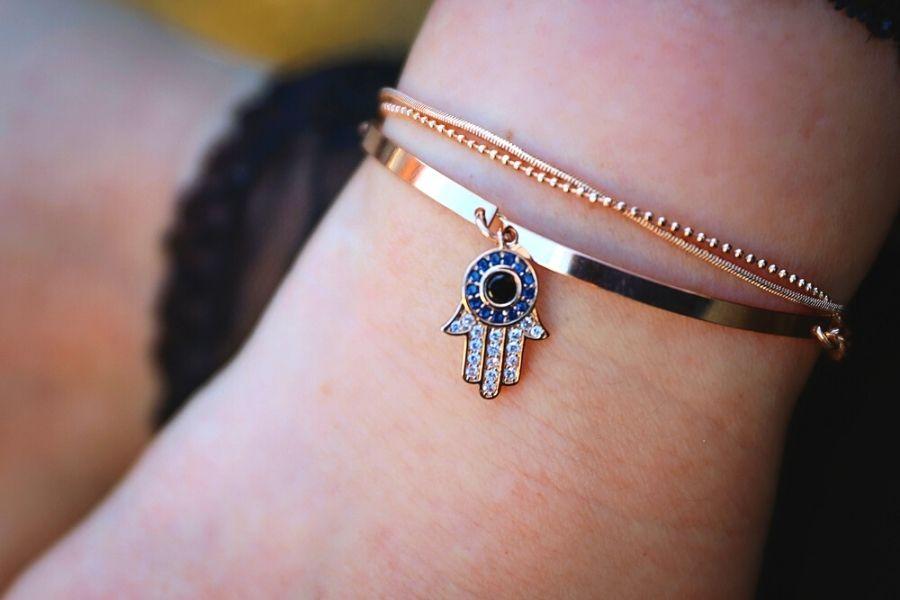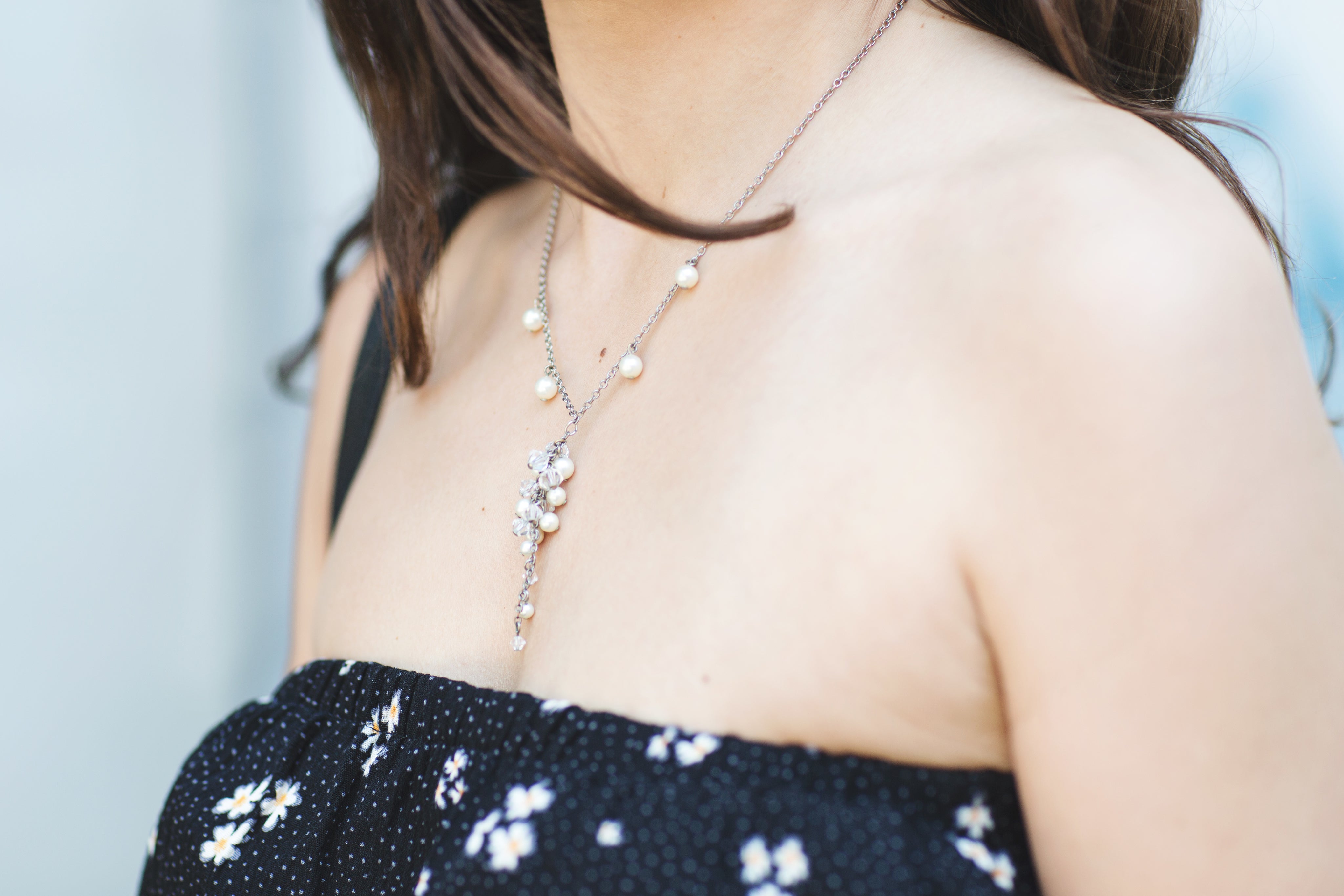
The Hamsa symbol is one of the most recognizable talismans in the world. If you've seen the Hamsa on jewelry, tapestries, or clothing, you might be wondering what it means. How is it important in religion and spirituality? Is it okay to wear the Hamsa hand?
There is a rich and vital history to the Hamsa hand meaning, spanning across centuries and cultures. It's revered in several significant religions and universally acknowledged as a sign of protection and good luck.
Hamsa Hand History
The sign of the Hamsa was first seen in ancient Mesopotamia, long before any organized religion. It was initially worn as an amulet to ward off evil. Even as societies have grown and changed over time, one constant has been the human desire for positivity and safety from evil.
While the Hamsa originated in what is now the Middle East, the image of the Hamsa hand shifted and grew with different cultures. As civilizations expanded and traveled across the world, their ideas and beliefs journeyed with them.
The Hamsa hand remained constant through the changing of cultures and the establishment of major religions. Because it predates many formal religions, the image of the Hamsa hand has a place in almost every prominent religion. It remains a symbol of protection and hope for many.
The Hamsa Hand: A Universal Sign of Protection
Although the Hamsa hand is known to bring fortune and fertility in some religions and cultures, its primary spiritual meaning is protection against the evil eye. The evil eye originated as a symbol but is generally known as bad energy brought by anyone with malice or through evil looks.
The Hamsa hand is universally known for uniting the good, dispelling the bad, bringing about positive energy, and thwarting negative energies.
The eye symbol seen on some Hamsa hands is not the evil eye, but rather an eye that guards the wearer against the malevolent force of the evil eye by looking out for it. It's somewhat of an “anti-evil eye” that brings positivity while also shielding the wearer from negative energy.
The talisman brings good fortune and wards off evil, depending on how you wear it. If the hand is facing downwards, the owner is open to the universe's goodness and welcoming in good fortune and prosperity. A hand facing up (generally with an eye) wards off the evil eye and protects the wearer from bad luck.
The Hamsa hand has various meanings throughout the many cultures and religions in which it is represented. Its most universal symbol is that of unity and protection, and in every representation, the Hamsa hand is a means of protection from evil.
The Hamsa Hand Meaning Across Cultures

The Hamsa hand has been used by almost all major faiths and across cultures, but each one ascribes a slightly different meaning to it.
Buddhism and Hinduism
The five fingers of the Hamsa hand represent each of the five chakras, which align with the five senses to clear the mind and body. These chakras are the sacral chakra, the throat chakra, the root chakra, the solar plexus chakra, and the heart chakra.
Judaism
In Jewish culture, the Hamsa hand represents protection from evil and a reminder to pray. Five is a significant number in Judaism and is considered the number of protection.
The five fingers of the Hamsa represent both the five holy books in the Torah (Genesis, Exodus, Leviticus, Deuteronomy, and Numbers) and a reminder to praise God with all five senses. The Hamsa talisman is worn similarly to the Buddhist and Hindu way - generally as jewelry.
Christianity
In Christianity, the Hamsa has had a varied history. Some Christians accept the use of the talisman, seeing it as representative of "the hand of Mother Mary" and a symbol of Mary's high place of honor. The Hamsa hand can be used to invoke her protection.
However, some Christians are opposed to wearing the Hamsa hand because many other religions have used it to represent their own ideologies. Instead, the cross would be seen as their primary protective symbol.
Islam
The two sects of the Islamic faith view the Hamsa hand differently. For the Shi'ite Muslims, the hand represents the five People of the Cloak, a group of highly influential Muslims including the Prophet Mohammed. Sunni Muslims view the fingers of the Hamsa hand as representative of the five pillars of Islam.
Both Sunni and Shi'ite Muslims refer to the Hamsa symbol as "the hand of Fatima." Fatima was Mohammed's daughter and one of the people of the cloak. She is often looked to for protection and good luck in Muslim culture.
Types of Hamsa Jewelry
The Hamsa is versatile in both appearance and material, ranging from metals to painted glass beads to wood.
Most commonly, Hamsa hands appear as talismans on necklaces. This necklace is not just a fashion statement, of course. Whether it's worn facing down or up, the hand protects the wearer and brings them good luck. It's also popularly worn as a necklace so both the owner and those around them can see the talisman.
Hamsa bracelets are a unique way to celebrate the history and spirituality of the symbol. They are also a form of jewelry that the wearer sees often, so they can be reminded of the talisman they are wearing. On a bracelet, the Hamsa hand can dangle as a charm or be part of the chain itself.
Hamsa earrings are relatively common, as are Hamsa rings. Hamsa rings might be the most visible way to wear Hamsa, not just to the wearer but to everyone they meet and shake hands.
No matter how the Hamsa jewelry is worn, it is elegant, beautiful, and spiritual. The symbol itself is a way to bring positive energy to those around us.
Should I Wear the Hamsa Hand Symbol?

The importance of the Hamsa is important to remember - this symbol is more than just a piece of jewelry and should be worn while reflecting its history and the cultures that embrace it as a talisman. Ensure that you are respectful of other cultures and histories when you buy any jewelry.
However, if you are spiritually comfortable with the Hamsa and aware of its rich history, you are more than welcome to join in the practice of protection and good fortune. A Hamsa is a symbol of security and unity, and this essence is universal.
Conclusion: The Hamsa Hand Meaning
The Hamsa hand spans almost every century and culture, protecting wearers from evil and bringing them good luck. If the spirituality of the token resonates with you, wear it as a jewelry piece to express your spirituality and to attract hope and positivity.
Wearing the Hamsa hand is believed to bring about good fortune and happiness, and can help you feel a sense of protection and spiritual connection. If you are considering purchasing a piece of Hamsa jewelry and don't know where to start, get in touch with us at Lexie Jordan Fine Jewelry. We will be happy to advise you as you discover the jewelry to match your spirit!






Leave a comment